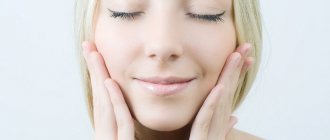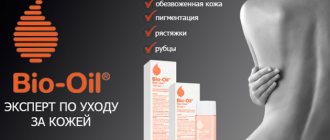Causes
Itching, redness, cracking of the surface, extremely uncomfortable sensations - any of us are familiar with this condition of the epidermis.
For some, a noticeable deterioration is associated with hormonal levels, for others - with cold weather (they often talk about an allergy to cold, although in its pure form it is rare). Only a thorough and comprehensive diagnosis will help answer the reason for the deterioration of the condition. Many patients come with the question: if the skin of the body is very dry, then what should be done? What means to choose to get rid of the problem? However, the doctor will first of all find out why it occurred.
There can be many “triggers”. Let's list some of them:
- Exposure to external factors, including sunlight, air conditioning, temperature changes, and so on.
- Age-related changes (senile xerosis).
- Lack of vitamins, including A, E and C. They are often called the “secret of youth,” although there is no secret in their action. These important components fight antioxidants, maintain the balance of the epidermis and its tone.
- The innate physiological characteristics of the body often answer the question of why the skin becomes dry. This is a so-called constitutional disorder, which is often observed in childhood, when parents of children aged 2 years and older pay attention to poor epidermis.
- Xeroderma is a pathological situation; defects are mainly visible on the face and flexor surfaces. In this condition, the permeability of the epidermal barrier is impaired.
- Allergic reactions.
- Various diseases, including fungal ones.
- Dermatoses also become a factor in the patient developing dryness, and the causes are called differently: contact and allergic, ichthyosis, psoriasis, but all of this is one class of pathologies.
Causes of dry and sagging skin
Skin laxity is a loss of firmness and elasticity in the skin, and its appearance is not always associated with natural aging.
Causes of sagging skin:
- Poor nutrition – frequent adherence to diets with strict restrictions, or, on the contrary, abuse of sweets and light carbohydrates, leading to the process of glycation in the skin.
- Disturbance in sleep patterns - lack of sleep leads to disturbances in circadian rhythms and lack of full recovery of both the entire body and the skin in particular. It is at night that most of the synthetic processes take place, i.e. cellular renewal and formation of young chains of collagen, elastin and hyaluronic acid.
- Poor environment, stress, smoking lead to the destruction of vitamin C and the skin’s protective system. The aggression of free radicals leads to the destruction of collagen fibers, and the lack of vitamin C slows down the formation of new ones.
- Passion for tanning - even active tanning 2 times a year during vacation. Exposure to ultraviolet rays reduces the activity of fibroblasts, they synthesize less collagen and hyaluronic acid, and more metalloproteinase enzymes are produced that destroy their own collagen.
- Cosmetics: incorrectly selected, poor quality, lack of regular and properly selected care - violates skin barriers, making it more sensitive and susceptible to other negative factors.
The presence of dry and sagging skin indicates a combination of several provoking factors, when premature aging of the skin occurs against the background of impaired barrier function.
Signs
It would seem that the fact that you have difficulties with the epidermis is understandable without additional explanation. However, there are a number of symptoms that are often not paid attention to, while they serve as a kind of “bell” that you need to check your health:
- after washing there is a feeling that the face, body or hands are “tight”;
- red spots appear;
- itching begins, which causes serious discomfort;
- Cracks and scratches easily form on the surface.
If you have very dry skin on your body, your doctor will tell you what to do. Unfortunately, often a simple change of cosmetics is not enough; comprehensive measures must be taken: change your diet, give up bad habits, monitor which products and materials may cause unpleasant reactions, identify medications that require caution when taken.
Differences between dermis types
To choose the right caring cosmetics, you need to know what you are dealing with and what specific features you have. There are four types in total:
- dry;
- fat;
- combined;
- normal.
These characteristics are determined by genetics, but lifestyle, environmental factors and health play a huge role. To find out which epidermis you have, do a simple test. Clean your face with a mild cleanser, pat dry with a towel, and do not apply any cosmetic creams or serums. Assess the external shine after about an hour.
First type
After washing your face without using moisturizing ingredients, you may feel some tightness. When you blot with matting wipes, you notice that there are no traces of grease left on them. This means that you have dry skin on your body - the reasons, as we have already said, lie in genetics, but improper care and lifestyle usually aggravate the problems.
As a rule, the basis for their manifestation may be a lack of lipids; the protective layer on the surface becomes thinner and becomes permeable. Unfortunately, such features lead to the fact that with age, deeper and more pronounced wrinkles appear on the face, as the epidermis loses its plasticity and ability to replenish volume. Creases occur more easily and last longer.
Second type: normal
In the modern world, where we are influenced by dozens of unfavorable factors, it is not so easy to meet a person with this type. Even if the sebaceous glands are naturally balanced, many circumstances, including health conditions and the use of cosmetics, can disrupt the harmony. And in this case, the doctor hears the question, why is the skin on the face very dry? Normally, sebum secretion occurs evenly and there is no shine. As a rule, the pores are not enlarged, small, blood circulation is good, the complexion is even, the texture is smooth and silky, there is no inflammation or acne. The epidermis is not sensitive, but with age it usually becomes denser, easily injured, itching and peeling occur, areas whose condition causes concern. Then patients turn to a dermatologist or cosmetologist with the question of how to get rid of dryness.
Third type: fat
If, after performing a home test, you see that the cleaned surface begins to shine within an hour, and pronounced traces of grease remain on the matting paper, then you have this type. The reasons for increased sebum production, in addition to congenital characteristics, may be:
- hormonal imbalance;
- use of certain drugs;
- stress;
- cosmetics that lead to the formation of comedones, etc.
Causes and symptoms
Loss of skin tone and elasticity is associated with many factors, including:
- age;
- stress;
- bad ecology;
- lack of vitamins and minerals;
- unbalanced diet;
- lack of hydration;
- presence of bad habits;
- incorrect selection of care products;
- lack of physical activity;
- genetic predisposition;
- hormonal changes in the body.
The collagen contained in it is responsible for the elasticity of cells. Over time, collagen becomes thinner, cell renewal slows down, and the skin becomes thinner, causing wrinkles and folds to appear.
External manifestations of loss of elasticity are expressed in the appearance of wrinkles, enlarged pores, and age spots. The skin loses its healthy color. It slowly returns to its original shape when pulled back. It is impossible to stop this process completely, but with the help of proper care and cosmetic procedures it can be slowed down.
Types of dryness
Problems with the epidermis are different: some suffer from constant discomfort, others develop unpleasant cracks and roughness in the cold, others complain of pockets of itching and burning. All this can be a consequence of various circumstances, including errors in choosing care, errors in nutrition and various factors that provoke allergies and dermatitis. Many women turn to their doctor with the question: very dry skin on the body - what to do? First of all, it is necessary to establish what type of problem a particular patient is:
- constitutional;
- acquired;
- pathological
Atopic dryness
This condition is also called endogenous eczema and is the result of a chronic disease that constantly recurs, accompanied by itching, rashes, and significant deterioration of the skin. The disease is not contagious, but can be inherited. Atopy is characterized by periods of exacerbation and remission, when there are no negative manifestations. However, this does not mean that the pathology has disappeared on its own; one should not relax in such a situation.
If you are worried about atopic severe dry skin of the body, the reasons are most likely a genetic disorder. The synthesis of filaggrin, a protein that is involved in the formation of a protective barrier, is imbalanced. Therefore, if parents have dermatitis, then with a high probability it will manifest itself over time in subsequent generations.
Quite often, the precursor to painful peeling is diathesis in childhood. Typically, every tenth child suffers from this disease, while among adults the disease occurs in approximately 1% of cases. Often these patients also struggle with asthma or chronic rhinitis. Allergic diseases aggravate the situation - this is already a violation of the immune system. The problem is also aggravated by climatic conditions, household pollution, frequent friction and pressure on parts of the body.
Acquired
It occurs as a result of exposure to a number of negative factors. These include:
- ultraviolet;
- temperature difference;
- ambient air conditioning, too active operation of heating radiators;
- improper care using aggressive agents;
- therapy, including the systematic use of creams containing retinoids;
- chemicals (for example, if you have dry skin on your body, the reasons may be due to production factors);
- incorrectly selected or performed cosmetic procedures.
Senile
The loss of moisture is prevented by the so-called epidermal barrier. Cells tightly adjacent to each other, epithelial cells, prevent water from evaporating. Helps maintain the integrity and reliability of this boundary, sebum, which additionally gives elasticity.
The sebaceous glands work less actively over the years, and age-related changes in metabolism lead to the following:
- atrophy and decreased elasticity of the outer integument;
- hydrobalance imbalance;
- the formation of unwanted formations, including age spots, spider veins and comedones;
- the appearance of wrinkles;
- pronounced flabbiness;
- loss of clarity of facial contours.
Causes of peeling
It is not always washing that becomes the provoking factor. Peeling can also occur for other reasons. The most common of them:
- improper care. Lack of hygiene or, conversely, too thorough cleansing of the skin using soap, strong scrubs and hot water. As a result of such aggressive care, the protective barrier is erased from the skin and it begins to dry out;
- lack of nutrients and vitamins. This is a common phenomenon in the winter-spring season, when the cells do not receive the required amount of nutrients;
- the presence of skin diseases such as psoriasis or eczema. Skin diseases are accompanied by severe itching and disruption of the water balance in the tissues. In this case, it will not be possible to get rid of peeling without a doctor’s recommendations, so it is important to choose the right treatment;
- incorrectly selected cosmetics. If facial skin care products contain certain additives that cause allergies and flaking, it is best to discard them;
- active rubbing of the facial skin after washing;
- dehydration due to lack of hydration. An incorrectly selected moisturizer for care can cause peeling.
Degrees of development
The disease can have different levels of severity. The moderate stage gives a feeling of tightness, the epidermis becomes rougher, irritated, and elasticity decreases. Very high severity leads to peeling of scales, areas of severe irritation, pimples, and itching appear on the face and body. Some areas, such as knees and elbows, tend to be particularly dry - these areas are particularly rough and may develop rough calluses.
The doctor will advise you on what exactly needs to be done - in some cases it is necessary to use not just care products, but medications. They should be prescribed exclusively by a specialist: even a pharmacist at a pharmacy does not always recommend suitable medications. An allergy that joins the irritation that torments you can lead to serious injury that will have to be treated longer and in more radical ways. The doctor will prescribe ointments that are suitable individually.
Skin prone to rosacea (rosacea) and redness
A distinctive feature is the appearance of red, inflamed spots on the cheeks, nose and chin. Such skin is sensitive to weather conditions - burning and other signs of discomfort occur in the sun and cold. Small blood vessels (rosacea) often appear on the face and chest.
Features of skin prone to redness and rosacea:
- Does not tolerate aggressive care products and requires the use of cosmetics with an anti-inflammatory effect.
- Areas of peeling, wrinkles, freckles, and age spots quickly appear.
- Pink and red pimples may appear, sometimes purulent.
Most suitable products:
- Cosmetics with anti-inflammatory effect. Soothing creams and face masks are perfect. All other means must be used with caution so as not to aggravate the process.
- Sunscreen compounds. Necessary because skin prone to redness and rosacea reacts too strongly to sunlight.
- Protective creams. In winter, you need to use medications that protect the skin from cold temperatures and wind. This will make it possible to avoid exacerbation of rosacea.
Recommended procedures:
- Laser that eliminates dilated blood vessels and redness. This is one of the most effective treatment methods for inflammation and rosacea.
- Very gentle superficial chemical peeling. Deeper options are not suitable in this case.
- Botox and Dysport injectables, as well as Retisline and Juvederm fillers used to eliminate wrinkles. They are safe and can improve skin condition.
Laser rejuvenation
The best results when caring for such skin are obtained by combined tactics - a combination of cosmetics and various procedures performed by a cosmetologist in a clinic.
Diagnostic methods
To find out what causes very dry facial skin, how to treat dry body in women and men and find the causes, it is necessary to conduct a comprehensive examination to treat the patient, which includes:
- clinical and biochemical blood tests;
- consultation with a dermatologist and cosmetologist;
- study of hormonal status;
- allergen analysis and so on.
The full list of necessary diagnostic tests depends on the individual condition. Root causes, in particular, may be related to stress, phase of the life cycle, and so on.
Treatment
You can often hear that if you are faced with a similar problem, the most important thing is to achieve proper, deep and constant hydration. However, this is not the only recipe for getting rid of difficulties. In general terms, the line of behavior is correct, but often it is necessary to get rid of the factor that provokes the deterioration of the situation, and this is why tests are prescribed and examinations are carried out.
After diagnosis, the doctor will draw up a list of measures on what to do if your body skin is very dry. As a rule, it begins with drawing up a balanced diet and establishing a drinking regime. You should also try to avoid the influence of negative environmental phenomena: do not wash your face with hard water, avoid exposure to direct sunlight, and do not be in the wind.
It is important to remember that lifestyle changes, including quitting smoking, also have a beneficial effect on the condition of the epidermis.
If dryness is associated with disruption of any organs and systems, including endocrine and digestive, treatment is carried out by a specialized specialist in contact with a dermatologist.
How to deal with facial numbness syndrome due to osteochondrosis
Osteochondrosis of the neck leads to irreversible changes in the vertebrae, which directly affect the general well-being of the patient and may manifest themselves in the form of symptoms that are similar to other pathologies. If discomfort occurs in the upper spine, or disruption of the normal movement of blood and lymph in the tissues of the head and face, it is necessary to conduct a comprehensive examination.
Why does the face go numb with osteochondrosis?
Unpleasant sensations, pain in the back and neck may indicate the development of osteochondrosis, which is formed due to the load on the vertebrae when the spine is in an uncomfortable, static-vertical position for a long time.
If there is damage to the vertebrae, cartilage and ligaments in the cervical region, then disturbances in the sensitivity of the skin of the face may occur, the normal mechanism of blood circulation may change, resulting in increased swelling. These symptoms appear due to changes that occur in bone cells during the development of the disease. Osteochondrosis is characterized by a decrease in the normal thickness of cartilage tissue, which leads to contact and friction of adjacent vertebrae. This can subsequently cause the development of inflammation, pinching of blood vessels, spinal cord nerves, and arteries.
These changes in the circulatory and nervous system of the body affect not only the normal functioning of the spine, but also respond with a burning sensation, numbness of the facial muscles, changes in tissue structure, and symmetry.
Diagnostic examination for osteochondrosis
The dangerous fact is that numbness and a burning sensation in the facial muscles can symbolize the spread of other diseases, for example, the brain, so if unpleasant symptoms occur, it is necessary to conduct a neurological examination.
Headaches and migraines, impaired facial symmetry, numbness, burning, tingling sensation, decreased muscle mobility can be manifestations of impaired blood flow in the brain, the development of tumor growths under the cranial bone, hemorrhage, and stroke. The difference is that in the presence of these symptoms of osteochondrosis, unpleasant manifestations on the face can go away when performing physical activity or, on the contrary, occur when staying in a certain body position for a long time. Also, with diseases of the spine, there is no disruption of mental functions or changes in mental activity, the patient maintains concentration, attention and clarity of thought.
Unfortunately, diagnosing and treating numbness of the facial muscles at home can lead to the progression of the disease. Therefore, it is especially important to conduct an X-ray and tomographic examination of the brain and spinal cord. This will reduce the likelihood of an incorrect diagnosis and help avoid many problems and complications by starting treatment on time.
Treatment of numbness of the facial muscles with osteochondrosis
The fight against the negative consequences of osteochondrosis of the cervical spine is carried out by a neurologist or vertebrologist, who are specialists in the field of diseases associated with the nervous system. As a rule, medications are prescribed after a comprehensive diagnosis, taking into account the individual characteristics of the course of the disease.
To combat disorders in muscle tissue and nerve endings on the face, it is first necessary to begin treatment for osteochondrosis:
- With the help of medications that reduce inflammation in the vertebrae and nearby tissues;
- Rubbing with ointments and creams that reduce pain;
- Medicines that restore the cartilage layer and strengthen joints.
An effective remedy is also a back and neck massage, which improves blood circulation and lymph flow to the brain, saturating and nourishing muscle cells on the face.
Author: K.M.N., Academician of the Russian Academy of Medical Sciences M.A. Bobyr
Care
Additionally, the following procedures are recommended:
- oxygen therapy;
- ozone therapy;
- magnetic therapy;
- vitamin injections;
- cell mineralization;
- laser therapy and so on.
All procedures are combined with the use of high-quality caring cosmetics recommended by a specialist. It is recommended to constantly be in touch with a dermatologist so as not to cause damage to your health. In order to detect violations in time and correct the situation, regular monitoring is needed.
Peeling hands
Many patients with a similar problem are ready to limit themselves to using a special nourishing cream. However, often this measure is not enough, especially since there are no sebaceous glands on the palms, which means that the natural protective barrier is relatively weak. So “amateur activity” in this area is undesirable. It is better to make an appointment with a dermatologist and ask how to treat dry skin on your hands.
Pay attention to factors that particularly affect the health of the epidermis:
- exposure to household chemicals and detergents;
- improper hygiene;
- frequent contact with hot water;
- influence of external factors.
Peeling on the legs
This is a fairly common disorder that affects both men and women of different ages. In addition to the reasons already listed, damage to the lower extremities is often a consequence of poor circulation in the veins of the legs - varicose veins. So, in addition to other tests, it is necessary to check the condition of the blood vessels.
Dryness in winter
The problem that occurs during the cold season is caused primarily by temperature changes (between indoors and outdoors) and dry air due to strong heating. Of course, the cold itself plays a big role, which leads to dehydration. And if you apply water-based cosmetics to your face and body, this will have a detrimental effect on your health and appearance. Most often, these are the reasons for very dry skin throughout the body in a particular season.
It is a mistake to think that you don’t need to use moisturizers in winter. With the right selection, the cream will work to improve your overall condition. Products containing shea, jojoba, and macadamia oils are recommended, as well as creams and ointments that form silicone occlusive coatings. But it is better not to use cosmetics with hyaluronic acid in cold weather.
Combination skin – a cosmetologist will help you care for it
In this case, dry or normal areas alternate with oily areas located in the nose, forehead and chin. There is no “typical” behavior for this type - it all depends on the specific combination of areas. Its condition may fluctuate depending on the season, hormonal changes, stress, etc.
Recommended products for combination skin:
- In winter. Products that combat cold and dryness, which often occurs due to a long stay in a room with central heating.
- In summer. Moisturizing cosmetics that prevent aging.
- Always. Products with vitamins, growth factors, peptides and antioxidants that improve the condition of skin structures.
It is recommended to use a rich cream on dry areas and a light moisturizer on oilier ones. That is, owners of such skin will need several care products.
Applying a rich cream on dry areas
Ideal procedures:
- In this case, there are no uniform recommendations - they differ for each patient. For most people, plasma injection, mesotherapy, and facial cleansing are suitable in case of acne and other skin manifestations associated with clogged pores.
- For such skin, preparations based on botulinum toxin are recommended - Dysport, Botox and their analogues, fillers (fillers) based on hyaluronic acid and other components.
It is very difficult to choose the right methods for caring for combination skin - only a cosmetologist can do this. Trying on your own can cause serious harm.
Constant peeling
If you experience persistent discomfort, it is necessary to undergo a diagnosis because:
- it can be a consequence of various diseases, including endocrine ones;
- stable peeling occurs in places that are subject to regular mechanical stress (for example, knees and elbows);
- persistent dryness may be the result of an allergy that is not seasonal.
So the question of why the skin on the body dries so much and what to do if the epidermis continues to deteriorate should lead you to a dermatologist’s office, who will prescribe a comprehensive examination.
Pale skin requires special attention and proper care
Light skin looks beautiful and aristocratic. It’s not for nothing that nobles used to strive with all their might to get such a complexion. However, it has disadvantages:
- Skin with this feature is very sensitive to the sun - it practically does not tan, but turns red. Sunburn is common.
- White-skinned people can react very violently to any cosmetic procedures. The solarium is also a risk area for them. It can cause unpleasant consequences, including burns.
- Since such skin lacks the pigment melanin, which protects it from sunlight, without proper care and use of sunscreen, wrinkles, freckles and age spots appear on it. Such people have an increased risk of developing skin cancer, including the most malignant - melanoma.
Cosmetic products for fair skin:
- Sunscreen. Protects against sunburn, cancer, freckles, age spots. Products with SPF 30 or higher are recommended.
- Antioxidants. Protects against the oxidative effects of the sun and the environment.
- Masks, lotions and other products containing vitamins and anti-inflammatory components. They cleanse the skin well and relieve inflammation.
Mask for pale skin
Ideal procedures:
- Laser. Pale skin is an ideal type for laser treatments from hair removal to non-surgical tightening. Thanks to its light tone, it responds well to the laser.
- Mesotherapy. Introducing vitamin cocktails into the skin improves its structure and nourishes it with useful substances.
- Chemical peeling. An excellent alternative to laser. Only soft surface options are recommended.
- Dysport / Botox and fillers (fillers). You can start using it early, as soon as the first age-related changes appear.
Proper care will turn such skin into jewelry and significantly reduce the risk of developing cancer.
Prevention
There are ways to reduce the impact of environmental factors and prevent problems:
- Wear rubber gloves when constantly in contact with water and detergents.
- Avoid using household chemicals unless necessary.
- Do not overuse your face with tap water: its composition often causes peeling.
- When looking for a way to get rid of dry skin, analyze which substances may serve as allergens for you.
- Protect yourself from the effects of negative environmental factors.
- Do not overuse cosmetic procedures associated with trauma, do only gentle peelings and do not use abrasives with coarse particles. Even those that are designated as soft in the instructions can seriously scratch.
- Use care products selected individually, taking into account all the nuances of the current condition.
Proper nutrition
When choosing options for how to get rid of dry skin, pay attention to your diet. It is recommended to enrich it with vegetable oils, in particular those based on flax. It contains omega-3 fatty acids, in greater quantities than other vegetable fats, and has a beneficial effect on health. Flaxseed oil also contains many components that prevent external aging.
If we talk about other sources of omega-3 acids, then this is fish, which is also recommended to be included in the menu.
Avocado is rich in healthy fats and helps retain moisture. So, if the question arises, what to do when your skin is very dry, enrich your menu with this useful product.
The condition of the epidermis is also favorably influenced by the nutrients contained in eggs. The protein contains essential amino acids, and the yolk contains vitamins and folic acid, which, by the way, is also found in greens and green vegetables.
Care products
When patients complain of flaking and dryness, there may be different reasons. However, today there are products that are recommended in most cases to get rid of peeling and cracking.
Most often, doctors prescribe drugs with hyaluronic acid. Normally, it is found in the body and has the ability to retain water molecules. Thus, hydration of the outer integument and deeper layers of the dermis occurs naturally.
Urea, lactic acid and sodium pyrroglutamate also have a beneficial effect on the condition.
In recent years, doctors have increasingly recommended medications made from hydrolyzed human placenta to solve the problem of very dry skin. In particular, the Japanese placental drug Laennec is used to normalize her condition. This is an innovative product from the group of immunomodulators and hepatoprotectors. Its unique composition includes:
- Cytokines and peptides that provoke an immunological reaction.
- Interleukins acting as a mediator of inflammation.
- More than 36 cell growth factors.
- 18 amino acids, including essential ones, to prevent unwanted cellular oxidation and prevent the action of free radicals.
- Nucleic acids for the correction of scars, stretch marks, hyperpigmentation, acne, post-acne, combating signs of aging by chrono- and phototype.
- Glycosaminoglycans – to maintain the cellular matrix.
- About 100 protective enzymes and 40 vital minerals.
- Vitamins B1, B2, B6, B12, C, D, E.
- Hyaluronic acid to optimize water balance and moisture retention in cells.
Laennec drug and super-thin injection needles Nanoneedle
Laennec - injection solution No. 10
Curacen / Curacen
Nanoneedles with ultra-thin walls 30G
Nanoneedles with ultra-thin walls 33G
Whatever the causes of dry skin on the face and body, the use of Laennec can improve its condition and relieve negative symptoms. In particular, experience has already been gained in its successful use in the treatment of atopic dermatitis. The cytokines included in the composition activate cell metabolism and prevent the development of fibrosis. Nucleic and organic acids, nucleosides enhance protein synthesis. Vitamins provide the antioxidant and restorative effect of the drug. And the epidermal growth factor EGF stimulates the renewal and reproduction of epithelial cells, which has a beneficial effect on the general condition.










